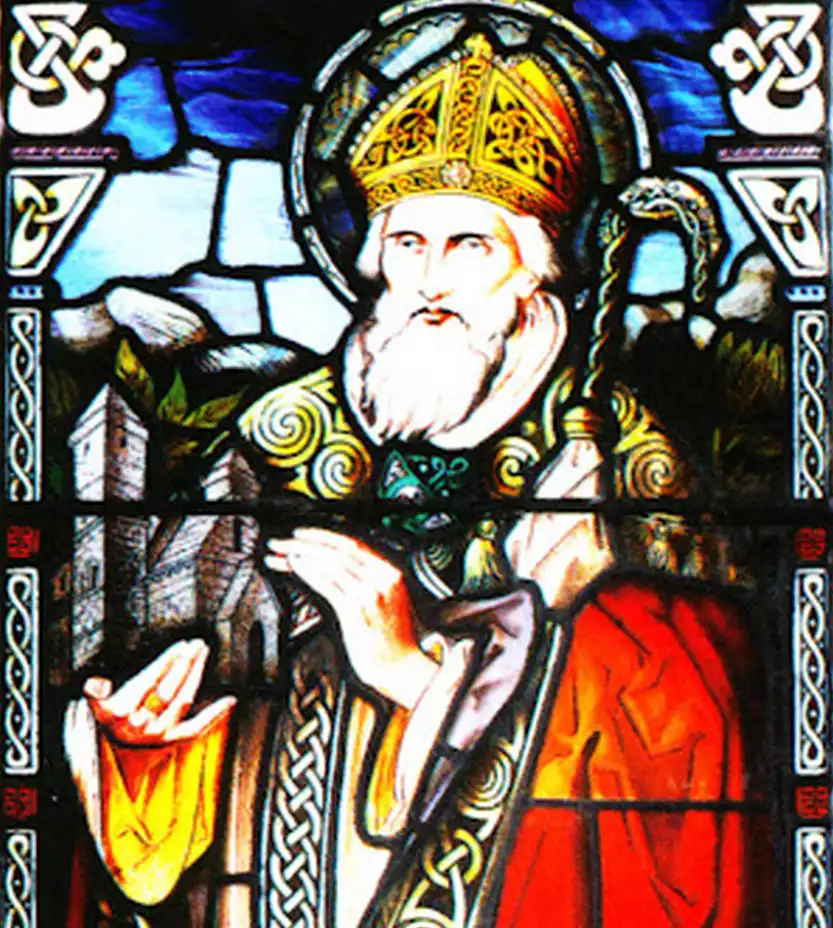
Saint Maedoc of Ferns, also known as Saint Aidan or Mogue, was an influential Irish bishop and missionary in the 6th and 7th centuries. Born circa 550 A.D. on Inisbrefny island in what is now County Cavan, Maedoc studied at the renowned Christian learning center under Saint David in Wales before returning to Ireland around 580. He went on to establish numerous monasteries and churches across Ireland and Wales, with his most significant foundation at Ferns, County Wexford. So beloved was this “Chief Bishop” that he earned the affectionate name “Mogue” meaning “my dear little Aodh”. His life and legacy live on through dedications like Saint Aidan’s Cathedral in Enniscorthy.
The Early Life and Studies of Saint Maedoc of Ferns
The beloved Irish Saint Maedoc, born as Áed circa 550 A.D. on the island of Inisbrefny in County Cavan, led an influential life as a revered bishop and missionary across Ireland and Wales. As a boy, he was even held hostage by the High King of Ireland Ainmuire mac Sétnai, likely to ensure the loyalty of Maedoc’s powerful family. Once released, Maedoc pursued spiritual studies under Saint David at the renowned monastery in Wales, forming a deep bond with his mentor. When did this bright-eyed young man with a thirst for biblical knowledge become the eminent Aidan who brought honey bees to Ireland and founded monasteries all over the emerald isle?
Around 580, Maedoc returned to Ireland after his years abroad, landing on the shores of Wexford. The local chieftain was so impressed by the holy man’s quick wit and wisdom in mediating a conflict, that he granted lands for Maedoc’s religious communities. The saint fasted for years while establishing monasteries at Ferns, Drumlane, Dissert-Nairbre and more, before becoming the first Bishop of Ferns. His spiritual leadership facilitated the victory of King Brandubh of Leinster over High King Áed mac Ainmuirech in battle, ushering the Synod where Ferns became a diocese and Maedoc its beloved “Ard-Escop” or Head Bishop.
Legends of Saint Maedoc tell of his caregiver’s prophecy, a star falling on his parents, wolves obeying his commands and countless miracles. But perhaps most wondrous was Maedoc’s legacy of compassion. Thirty churches founded, fame across Wales – for where his stone tomb rests within the medieval walls of Saint Edan’s Cathedral in Ferns, the man once known as “my little Aedh” is still cherished as “good Mogue.
Saint Maedoc of Ferns left an enduring legacy through his missionary work and spiritual leadership in 6th and 7th century Ireland and Wales. Though he passed long ago, the beloved bishop still captures hearts as “good Mogue”—his affectionate nickname meaning “my dear little Aodh”. The thirty churches founded, his guidance of King Brandubh’s pivotal victory, and the many miracles attributed reveal Maedoc as a wise teacher. Most of all, he represents the timeless virtues of compassion and service. And within the medieval walls of Saint Edan’s Cathedral, the echo of this shepherd’s bell can still be faintly heard.
References
Harris Slover, C. (1927). Early Literary Channels Between Ireland and Britain. Studies in English, 7, 5-111.
Reeves, W. (1861-1864). On Certain Irish Ecclesiastical Bells. Proceedings of the Royal Irish Academy (1836-1869), 8, 441-450.
